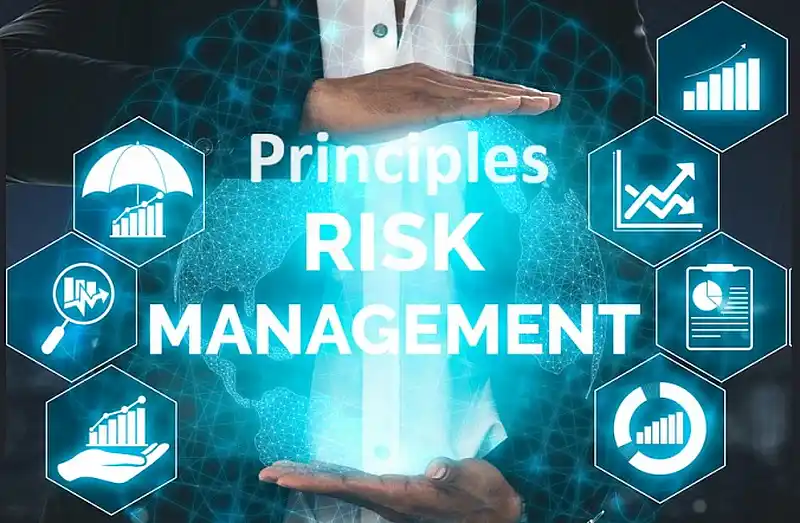Binary Options Risk Management: Proven Strategies and Expert Tips
Contents
Binary options are financial instruments that allow traders to make predictions about the price movement of an asset in a specific direction over a set period. The core principle of trading is that the trader earns a fixed profit if their prediction comes true, or loses the amount invested if the prediction is incorrect.
Risk management plays a crucial role in binary options trading. It helps traders protect their capital from excessive losses and ensures long-term stability in trading. Without effective risk management, even the most profitable strategy can lead to a complete loss of funds due to unfavorable market conditions or a series of unsuccessful trades.
Basic Principles of Risk Management
The key principle of risk management is to establish a balance between potential profit and possible losses. Traders should assess each trade in terms of the risk-to-reward ratio. It is recommended to choose trades where the potential profit exceeds the possible loss by at least 1.5-2 times. This allows traders to remain profitable even with a certain percentage of losing trades.
Preservation of trading capital is a fundamental principle of risk management. The main goal of a trader should not be to maximize profits in the short term but to ensure long-term stability and growth of capital. This is achieved by limiting the size of bets, using stop-losses, and avoiding excessively risky trades. Preserving capital allows the trader to stay in the game even after a series of unsuccessful trades and provides an opportunity to recover and continue trading.
These principles form the foundation for developing more specific risk management strategies in binary options trading.

Risk Management Strategies
Effective risk management requires the application of specific strategies that help traders minimize potential losses and optimize the trading process. These strategies are based on proven methods and principles successfully used by professional traders. Consider four key strategies that can significantly improve your risk management in binary options trading.
Limiting the Size of the Bet
One of the key risk management strategies is limiting the size of the bet. It is recommended not to risk more than 1-2% of the total trading capital on a single trade. This helps protect the account from serious losses even with several consecutive unsuccessful trades. For example, if your trading capital is $10,000, the maximum bet should not exceed $100-$200.
Diversifying the Portfolio
Diversification involves distributing risks by trading various assets. Do not concentrate only on one type of asset or market. By selling different currency pairs, stocks, indices, and commodities, you reduce the overall risk of the portfolio. If one asset shows losses, the profit from others can compensate for them.
Using Stop-Losses
While classic stop-losses are not applicable in binary options due to fixed payouts, traders can use mental stop-losses. This means a predetermined loss level at which the trader stops trading for the day or week. For example, you can set a rule to stop trading after three consecutive losing trades.
Hedging Positions
Hedging in binary options can be done by opening opposite positions on related assets. For example, if you have an option for the rise of EUR/USD, you can open an option for the fall of GBP/USD for partial risk hedging. This may reduce potential profit but also decrease the risk of significant losses.
Psychological Aspects of Risk Management
The psychological component plays a critical role in successful binary options trading. Even the most effective strategy can fail if the trader cannot control their emotions and make rational decisions. Managing the psychological aspects of trading is a key factor in minimizing risks and achieving long-term success. Let’s consider three key psychological aspects that every trader should take into account:
Control of Emotions
Emotions are the trader’s worst enemy. Fear and greed often lead to thoughtless decisions. It is important to develop emotional discipline, adhere to a pre-developed trading plan, and not give in to impulsive decisions. Meditation, keeping a trading journal, and regularly analyzing your actions can help control emotions.

Avoiding Overtrading
Overtrading is a common problem, especially among novice traders. The desire to “win back” after losses or to earn more after a successful series of trades can lead to unjustified risk increases. Set a limit on the number of trades per day and strictly adhere to it.
Accepting Losses
The ability to accept losses is an important aspect of trading psychology. Every trader experiences losses from time to time; it is an inevitable part of trading. It is important to view losses as part of the learning process, analyze their causes, and use the experience gained to improve your strategy. Do not let individual losses affect your overall trading strategy or emotional state.
Technical Analysis as a Risk Management Tool
Technical analysis is a powerful tool for risk management in binary options trading. It helps determine optimal entry and exit points in the market and predict potential price movements. Proper use of technical analysis can significantly reduce risks and increase the probability of successful trades.
Using Indicators
Technical indicators help traders objectively assess market conditions. Popular indicators include:
- Moving Averages (MA): help determine the trend and potential support/resistance levels.
- Relative Strength Index (RSI): indicates whether an asset is overbought or oversold.
- Bollinger Bands: help assess volatility and potential reversal points.
Combining multiple indicators can provide more reliable signals and reduce the risk of false triggers.
Chart and Pattern Analysis
Studying price charts and recognizing patterns allows traders to predict future price movements. Key elements include:
- Support and Resistance Levels: help identify potential reversal points.
- Trends and Trendlines: indicate the overall direction of price movement.
- Candlestick Patterns: such as “hammer” or “doji star,” can signal possible trend reversals.
The ability to read charts and recognize patterns enables traders to make more informed decisions and reduce risks.
Fundamental Analysis and News Trading
Fundamental analysis and considering news play an important role in risk management, especially when trading binary options over longer time frames. Understanding economic and geopolitical factors helps traders anticipate potential market movements and adjust their strategies accordingly.
Evaluating Economic Indicators
Key economic indicators can significantly impact markets:
- GDP: reflects the overall health of a country’s economy.
- Unemployment Rate: an indicator of the labor market’s health.
- Inflation: influences the monetary policy of central banks.
- Interest Rates: have a significant impact on currency exchange rates.
Traders should monitor the economic calendar and consider the potential impact of important economic releases on their positions.
Considering Geopolitical Factors
Geopolitical events can cause significant fluctuations in financial markets:
- Political Elections and Government Changes.
- International Conflicts and Trade Wars.
- Natural Disasters and Global Crises.
Traders should stay informed about current geopolitical events and assess their potential impact on the markets. During periods of high geopolitical tension, it may be wise to reduce position sizes or temporarily refrain from trading certain assets.
Combining technical and fundamental analysis allows traders to gain a more comprehensive view of the market situation and make more balanced decisions, contributing to effective risk management.

Using Demo Accounts and Education
Effective risk management begins before a trader starts working with real money. Using demo accounts and continuous education are key elements in developing risk management skills and successful binary options trading.
Practice Without Real Money Risk
Demo accounts provide traders with the opportunity to:
- Test trading strategies without financial risk
- Familiarize themselves with the broker’s platform and tools
- Practice risk management skills in real market conditions
- Learn to control emotions during trading
We recommend spending at least 1-2 months on a demo account before moving to real trading. This time helps to develop discipline and confidence in your strategy.
Importance of Continuous Education
Markets are constantly changing, so continuous education is crucial for success:
- Regularly study new strategies and analysis methods.
- Keep up with changes in binary options market regulation.
- Participate in webinars, and online courses, and read professional literature.
- Exchange experiences with other traders on forums and communities.
Continuous education helps adapt to changing market conditions and improve risk management skills.
Keeping a Trading Journal
A trading journal is a powerful tool for analyzing and improving trading strategy. It helps traders objectively evaluate their actions and make more informed decisions in the future.
Analysis of Successful and Unsuccessful Trades
In your trading journal, record:
- Date and time of the trade.
- Traded asset.
- Trade direction (up/down).
- Stake size.
- Trade outcome (profit/loss).
- Reasons for the trade decision.
- Emotional state during the trade.
Regularly analyzing these data points helps identify patterns in your trading, pinpoint the most profitable strategies, and recognize common mistakes.
Adjusting Strategy Based on Data
Based on your trading journal analysis, you can:
- Identify the most successful assets and trading times.
- Identify weaknesses in risk management.
- Evaluate the effectiveness of different strategies and indicators.
- Adjust stake sizes based on the success of specific trade types.
Regularly adjusting your strategy based on trading journal data allows for gradual improvement in trading results and more effective risk management. Keeping and analyzing a trading journal requires discipline and time, but it’s an investment that pays off with more successful and controlled trading in the long run.
Choosing a Reliable Broker
Choosing a reliable broker is a crucial aspect of risk management when trading binary options. Making the right choice can significantly reduce operational risks and provide more comfortable trading conditions.
Criteria for Evaluating Brokers
When choosing a broker, consider the following factors:
- Reputation and reviews from other traders.
- Trading conditions (minimum deposit, commissions, spreads).
- Quality and functionality of the trading platform.
- Availability of various types of options and assets.
- Order execution speed.
- Quality of customer support.
- Educational opportunities and analytical support.
- Withdrawal process (speed, fees).
Importance of Regulation and Licensing
Working with a regulated broker significantly reduces risks:
- Regulated brokers must adhere to strict financial standards.
- Licensing ensures client fund protection.
- In case of disputes, traders can appeal to the regulatory authority.
- Regulated brokers are more reliable and less prone to fraudulent activities.
Always verify the broker’s licenses and their validity. Prefer brokers regulated by reputable financial bodies such as CySEC, FCA, and ASIC.
Conclusion
Risk management is a fundamental aspect of successful binary options trading. It requires a comprehensive approach and constant attention to various aspects of the trading process. Success in binary options trading doesn’t come overnight. It demands discipline, patience, and a constant drive for self-improvement. Regularly review and adjust your strategies, and learn from your mistakes and successes.
Remember that markets constantly change, and the ability to adapt to these changes is key to long-term success. Effective risk management doesn’t guarantee a lack of losses, but it significantly increases the chances of long-term success in binary options trading. Be cautious, keep learning, and never risk funds you cannot afford to lose.
Reviews